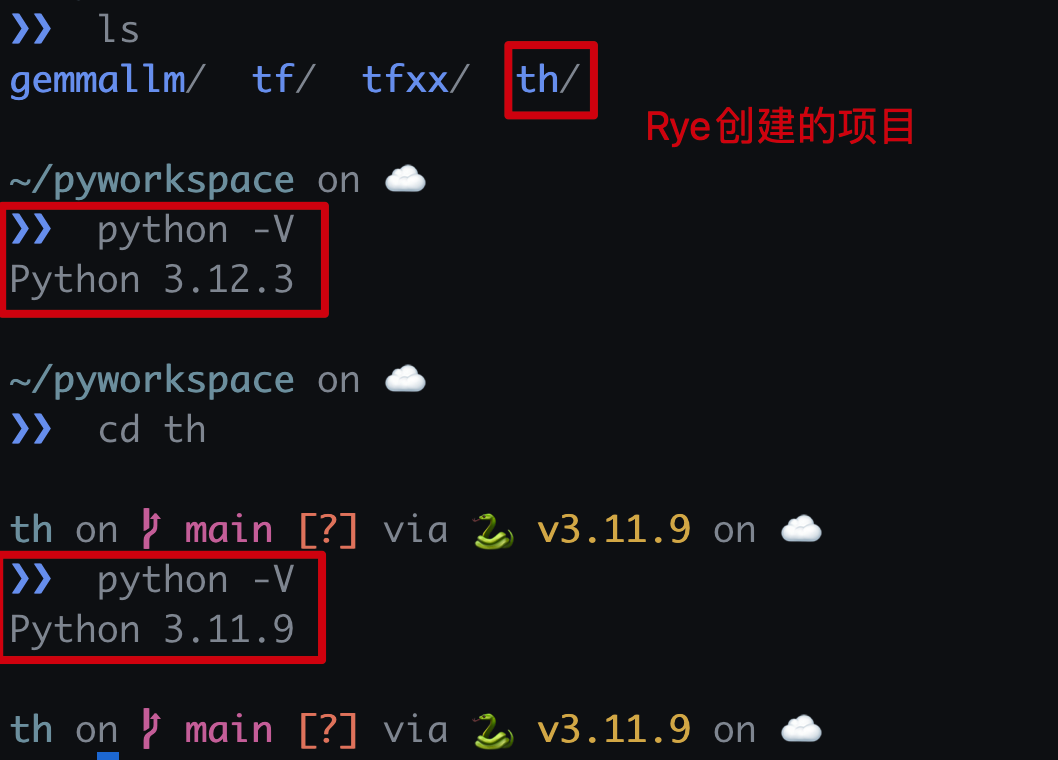YOLO(You Only Look Once)是一种广泛使用的目标检测模型,近年来也逐渐应用于图像分割和姿态估计任务。本篇文章将详细讲解YOLO模型在目标检测、图像分割及姿态估计中的应用,通过代码和预测结果分析帮助您更好地理解和使用YOLO模型。
Ultralytics库的所有预测结果都放在Result对象中,适用于目标检测、图像分割和姿态估计等任务,本文也将详细介绍如何处理不同任务的预测结果。
任务概述与对比
YOLO支持三种主要视觉任务,每个任务都有其独特的输出结构和应用场景:
-
目标检测(Object Detection)
- 输出:边界框(boxes)和类别标签
- 特点:定位物体位置并进行分类
- 应用场景:物体识别、车辆检测、人脸检测等
-
图像分割(Image Segmentation)
- 输出:像素级别掩码(masks)和类别标签
- 特点:提供物体精确的轮廓信息
- 应用场景:医学图像分析、场景理解等
-
姿态估计(Pose Estimation)
- 输出:人体关键点坐标(keypoints)和骨架连接
- 特点:识别人体姿态和动作
- 应用场景:运动分析、姿态追踪、行为监控等
YOLO模型的预测结果对象结构
所有任务的预测结果都封装在Results对象中,Results对象包含以下通用属性:
- orig_img: 原始图像数据
- orig_shape: 原始图像尺寸(高, 宽)
- path: 输入图像路径
- save_dir: 结果保存路径
- speed: 预测耗时信息
这些属性帮助我们在不同任务中标准化处理预测结果。
目标检测
目标检测的代码实现
下面的代码演示了如何使用YOLO进行目标检测,识别图像中的物体,并将检测结果(包括边界框和类别标签)绘制在原始图像上。
import os
from ultralytics import YOLO
import cv2
import os
import glob
import shutil
OBJECT_DETECTION_MODEL_PATH = './models/object_detection.onnx'
TASK_NAME = 'detect'
def generate_colors(names):
colors = {}
for name in names:
hash_object = hashlib.md5(name.encode())
hash_int = int(hash_object.hexdigest(), 16)
b = (hash_int & 0xFF0000) >> 16
g = (hash_int & 0x00FF00) >> 8
r = hash_int & 0x0000FF
colors[name] = (b, g, r) # OpenCV 使用 BGR 顺序
return colors
# 单张图像目标检测预测
def predict_single_image_by_detect(image_path, out_image_file):
# 获取输出文件`out_image_path`文件所在的目录
out_dir = os.path.dirname(out_image_path)
os.makedirs(out_dir, exist_ok=True)
image_list = [image_path]
results = model(image_list)
for result in results:
boxes = result.boxes
if boxes is None:
cv2.imwrite(out_image_file, result.orig_img)
continue
boxes_data = boxes.data.cpu().numpy()
names = result.names
class_names = list(names.values())
color_map = generate_colors(class_names)
img = result.orig_img
for box in boxes_data:
x1, y1, x2, y2, score, class_id = box
x1, y1, x2, y2 = map(int, [x1, y1, x2, y2])
class_name = names[int(class_id)]
color = color_map[class_name]
cv2.rectangle(img, (x1, y1), (x2, y2), color, 2)
label = f'{class_name} {score:.2f}'
cv2.putText(img, label, (x1, max(y1 - 10, 0)),
cv2.FONT_HERSHEY_SIMPLEX, 0.9, color, 2)
print(f"图像写入路径: {out_image_file}")
cv2.imwrite(out_image_file, img)
if __name__ == '__main__':
# 预测单张图像
image_path = 'bus.jpg'
out_image_path = image_path + '_predicted.jpg'
predict_single_image_by_detect(image_path, out_image_path)
目标检测结果分析
在目标检测任务中,Results对象中最重要的字段是:
- boxes:包含边界框的坐标、置信度和类别ID。
- names:类别标签映射。
- orig_img:原始图像数据。
每个边界框包含以下六个值:
[x1, y1, x2, y2, score, class_id]
# x1, y1: 左上角坐标
# x2, y2: 右下角坐标
# score: 检测置信度
# class_id: 类别ID
图像分割
图像分割的代码实现
图像分割任务比目标检测更加精细,它不仅需要识别物体的类别,还要提取每个物体的准确轮廓。
import os
import hashlib
import cv2
import numpy as np
from ultralytics import YOLO
import glob
import shutil
SEGMENT_MODEL_PATH = "./models/segmentation.onnx"
TASK_NAME = 'segment'
model = YOLO(SEGMENT_MODEL_PATH, task=TASK_NAME)
# 单张图像的分割模型预测函数
def predict_single_image_by_segment(image_path, out_image_path):
out_dir = os.path.dirname(out_image_path)
os.makedirs(out_dir, exist_ok=True)
results = model.predict(source=image_path)
for result in results:
if result.masks is None:
cv2.imwrite(out_image_path, result.orig_img)
continue
masks = result.masks.data.cpu().numpy()
boxes = result.boxes.data.cpu().numpy()
label_map = result.names
color_map = generate_colors(label_map.values())
img_with_masks = result.orig_img.copy()
for i, mask in enumerate(masks):
mask = mask.astype(np.uint8)
mask = cv2.resize(mask, (result.orig_shape[1], result.orig_shape[0]))
color = np.random.randint(0, 255, (3,), dtype=np.uint8)
colored_mask = np.zeros_like(result.orig_img, dtype=np.uint8)
colored_mask[mask > 0] = color
img_with_masks = cv2.addWeighted(img_with_masks, 1, colored_mask, 0.5, 0)
box_data = boxes[i]
x1, y1, x2, y2 = map(int, box_data[:4])
class_name = label_map[int(box_data[5])]
score = box_data[4]
cv2.rectangle(img_with_masks, (x1, y1), (x2, y2), color_map[class_name], 2)
label = f"{class_name}: {score:.4f}"
cv2.putText(img_with_masks, label, (x1, y1 - 10), cv2.FONT_HERSHEY_SIMPLEX, 0.6, (0, 255, 0), 2)
cv2.imwrite(out_image_path, img_with_masks)
print(f"Prediction saved to {out_image_path}")
if __name__ == '__main__':
image_path = 'bus.jpg'
out_image_path = image_path + '_segmented.jpg'
predict_single_image_by_segment(image_path, out_image_path)
图像分割结果分析
Results对象的特有字段:
- masks:实例分割掩码数据。
- boxes:边界框信息。
- names:类别标签映射。
掩码数据为二值化图像,需调整到与原图相同的尺寸,并与原图叠加进行可视化。
姿态估计
姿态估计的代码实现
姿态估计的目标是检测人体的关键点,并根据关键点绘制出人体骨架。
import cv2
from ultralytics import YOLO
import os
POSE_MODEL_PATH = './models/pose.onnx'
TASK_NAME = 'pose'
model = YOLO(POSE_MODEL_PATH, task=TASK_NAME)
def predict_single_image_by_pose(image_path, out_image_path):
out_dir = os.path.dirname(out_image_path)
os.makedirs(out_dir, exist_ok=True)
results = model.predict(source=image_path)
for result in results:
if result.keypoints is None:
continue
if result.boxes is None:
continue
orig_img = result.orig_img
keypoints = result.keypoints.data.cpu().numpy()
boxes = result.boxes.data.cpu().numpy()
for box_data, kpts in zip(boxes, keypoints):
for keypoint in kpts:
x, y, score = keypoint
cv2.circle(orig_img, (int(x), int(y)), 3, (255, 0, 0), -1)
for connection in skeleton:
part_a, part_b = connection
if kpts[part_a][2] > 0.5 and kpts[part_b][2] > 0.5:
x1, y1 = int(kpts[part_a][0]), int(kpts[part_a][1])
x2, y2 = int(kpts[part_b][0]), int(kpts[part_b][1])
cv2.line(orig_img, (x1, y1), (x2, y2), (0, 255, 255), 1)
cv2.imwrite(out_image_path, orig_img)
if __name__ == '__main__':
image_path = 'bus.jpg'
out_image_path = image_path + '_posed.jpg'
predict_single_image_by_pose(image_path, out_image_path)
姿态估计结果分析
- keypoints:包含人体关键点坐标和置信度。
- boxes:人体检测框。
- names:通常为'person'类别。
每个关键点包含以下数据结构:
[x, y, confidence] # 每个关键点包含坐标和置信度
实践建议
-
数据预处理
- 确保输入图像尺寸适合模型。
- 检查图像格式(OpenCV通常使用BGR格式)。
- 视需要进行图像增强。
-
结果处理注意事项
- 始终进行空值检查。
- 将tensor数据转换为numpy格式。
- 坐标值转换为整数,确保OpenCV兼容性。
-
性能优化
- 尽量批量处理图像以提高效率。
- 使用GPU加速推理过程。
- 根据实际需求选择合适的模型大小。
-
可视化建议
- 为不同类别分配固定颜色,以便更好区分。
- 调整线条的粗细和标签字体大小,保持预测结果可读性。
总结
YOLO在目标检测、图像分割和姿态估计三大任务中的表现令人印象深刻,模型的高度通用性使其成为计算机视觉领域中的热门选择。
-
数据结构差异
- 目标检测:处理boxes数据。
- 图像分割:同时处理masks和boxes。
- 姿态估计:处理关键点(keypoints)和骨架结构。
-
应用场景
- 目标检测:适用于物体定位和分类。
- 图像分割:适用于精确轮廓分析。
- 姿态估计:适用于人体动作追踪与行为分析。
-
通用处理流程
- ��模型加载与初始化。
- 数据预处理。
- 结果处理与可视化。
- 错误与异常检查。

